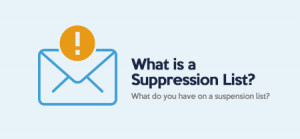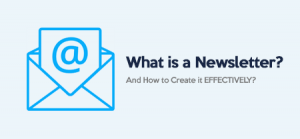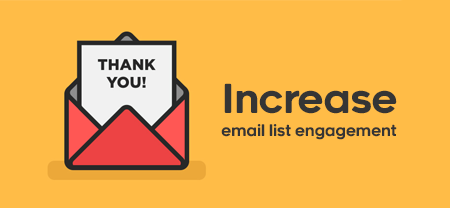Automated email marketing is incredibly convenient and powerful. Like anything, it takes some work to get right and maintain momentum.
Unfortunately, email lists can become clogged with inactive, disengaged, and illegitimate addresses as time goes on, and subscriber counts climb. To make sure things don’t get out of hand, you should be cleaning up those lists.
Even with an excellent email service provider (ESP), you’ll need to update your contact lists regularly. You should be looking for bounce rates, send failures, unsubscribe, and any events that change the dynamic of your lists.
Because these things can happen at any time, keeping a close eye on contact and subscriber lists is important.
What is Email List Monitoring?
Email list monitoring means reviewing your subscribers every day to weed out problematic addresses. Because it’s about cleaning things up, some refer to the process as list hygiene.
The primary goal is to remove failed emails to reduce the total bounce rate. About 2% of emails in your list go bad each month, which means if they’re not removed, they will continue to ruin your metrics.
Do you need an automated list monitoring and list cleaning tool? Check DeBounce email list monitoring platform.
However, bounced emails are not the only problem. You should also be looking for the addresses of unsubscribed users and incorrect contacts. Removing disengaged contacts is also important. If a person has gone years without opening one of your emails, it might be worth removing them from the list.
Which Metrics Matter?
Here are some of the metrics you should be watching before and after you clean your email lists:
- Bounce Rate: The percentage of failed emails. Either they didn’t reach a contact’s inbox or there was a technical error.
- Open Rate: The percentage of people that opened your emails. It doesn’t necessarily mean they read all of the content or that they interacted with hyperlinks and other elements.
- Click-through Rate: The percentage of clicks or engagements your email garnered.
- Spam Rate: The percentage or number of contacts that reported your email(s) as spam.
- Unsubscribe Rate: The percentage of your total subscriber base that unsubscribed after your latest email campaign.
There are other email marketing metrics, of course, but these are the most relevant to cleaning up your lists. You might also consider campaign ROI to understand how effective your last or most recent outreach was.
Why Automate it?
Cleaning email lists is a lot of work.
Even if you can find someone that enjoys sifting through thousands of email addresses to look for anomalies and problems, they’re not going to be efficient, and they’ll likely miss a few contacts. It makes so much more sense to automate the process. Luckily, many ESPs include that functionality, and when they don’t, you can find third-party support.
Automating the task ensures it can be done faster and at a steady pace, no matter how frequently you need it done.
Pro tip: Before automating cleanup, you should send out a reengagement email to get a feel for how many of your current subscribers are interested in receiving communications.
What are the Benefits of Email List Monitoring?
Besides a cleaner contact and email list, cleaning them out and automating the process are several benefits.
It Improves Metrics
For starters, it tightens up your user and engagement metrics so you can have a better understanding of your email marketing performance. If your emails are going out to thousands of people each week but only a fraction of that audience is even opening them, the returned numbers will be way off.
Skewed numbers make it more difficult to track performance, and they also make it harder to create accurate predictions, as well as informed decisions. It has sweeping implications for both your business and marketing efforts.
Imagine you’re spending most of your time marketing to a particular demographic or audience, but you have no true way to measure your progress. Worse yet, you cannot see that you would be better off marketing to another community. If that’s the case, creating buyer personas can help you identify the people you are trying to target.
Having those numbers jacked up means you’re going to be missing out on opportunities, and you may even focus your attention in the wrong places. This wastes time, money, and other resources. It’s akin to a poor sales process, which we all know ends up leaving money on the table.
Pro tip: Comparing metrics each month can help identify disparities in the data, like when you’ve seen an unverifiable surge in new subscribers. That would allow you to track insights like what campaigns boosted your subscriber account and why.
It Reduces Spam Complaints
Cleaning your email lists regularly also helps reduce spam complaints. The more you receive, the more you’re docked through Gmail, Yahoo, and other email providers. That’s because they keep a log of spam complaints, and as the total number grows, your risk level also grows.
Once you have been deemed a spam contact, your emails will go straight to the spam or junk folders, bypassing the inbox. We don’t have to tell you that’s bad news.
If you’re wondering why this might happen, or why your emails might be labeled as spam, the answer is simple. Some people may not recognize your brand, or they may not remember subscribing. Sometimes, it’s easier to report certain emails as spam because Gmail will automatically unsubscribe you from newsletters before sending them to the junk folder. So, you kill two birds with one stone doing it that way.
Whatever the case, once the spam filter captures and recognizes you, it will do the same across all users, not just the people who don’t want your content.
Pro Tip: Be sure you’re providing value to your customers with each content release. They’ll be less likely to label your emails as spam if you’re helping them or providing benefits.
It Reduces Bounce Rates
Like it or not, sometimes emails bounce. That means the newsletter, content or announcement never reaches the recipient’s inbox. It could be because the inbox is full. After all, the address is wrong, because they changed or canceled addresses, or it could just be a technical error.
A small number of bounces is okay, and it’s inevitable. But if there are too many, the result is the same as being labeled a spam contact. They harm your reputation and increase the likelihood that your correspondence will end up right in the spam or junk folders.
The sooner you clean your email list and remove bounced addresses, the better off you will be. You need to keep that total bounce rate as low as possible, which means cleaning often, and consistently.
10 Tips for Automating Email List Monitoring
There are some effective ways to clean out email lists, which further improve automated solutions.
Confirm New Subscriptions
Always use a double opt-in process for subscriptions, and ask users to verify their sign-up a second time through their inbox. It’s one of the best and only ways to ensure your audience truly wants to receive emails from your business.
It does take a little extra work for your new subscribers, but it helps cut down on filler sign-ups, where people might follow through the process and then forget. It also prevents others from signing up for content or newsletters on someone else’s behalf.
Encourage Engagement
Before cleaning up disengaged contacts, send out an email to grab their attention and bring them back into the fold. Include a poll or questionnaire, or ask for feedback. You might also include a gift, promo code, discount, or exclusive content for those who do read and engage.
Rule-based Cleaning
Most automated tools work on a trigger- or rule-based system. You can use this to your advantage to effectively clean out lists. Remove emails automatically after two bounces, instead of one, or trash contacts that haven’t clicked on or opened an email in months.
Know the Schedule
Automated or not, you will need to ensure your tools are cleaning lists regularly. While many of them are designed to run without human input, it’s still necessary to understand their schedules or triggers. How often are your tools activating? When should you expect your lists to be clean? Are they running as intended, or has something interrupted the process?
Include Another Opt-in
Every year, two years, or whatever period you determine, resend the opt-in email to gauge interest. Readers that want to remain subscribed to your correspondence will opt-in again, and those that do not want. This keeps your list clean and rids disengaged or uninterested contacts regularly. It’s also a good practice for complying with regulations, both nationally and internationally.
Reduce Email Lists
You may have several contact lists. Whenever possible, you should combine and limit them. For instance, if you have a list of fewer than 100 contacts and a larger one of thousands, it’s worth finding a common denominator to merge them.
Use One Tool
Some marketers divide their time between multiple email marketing tools, which can create disparity and fragmentation with the contact lists. Avoid this by sticking to one device. If you must move to another, be sure to migrate your most current contact lists and avoid doing so multiple times.
Remove Role Accounts
Role accounts are generally business-related, and they’re associated with functions or actions like billing, administrative, or reporting tasks. They can appear in email lists, depending on what you use to find new contacts, or who’s adding them.
They’re problematic because they’re usually assigned to a specific employee, and if that employee moves on, the account administrator changes. The new account holder may mark your emails as spam. Not to mention, your emails probably aren’t being read anyway.
You should remove role accounts entirely, and do your best to avoid them altogether.
Always Have a Backup
Mistakes happen, even with automated tools. Be sure you have a reliable backup of your lists, and be sure it’s separate from your active list or tools. That means establishing a proper backup strategy, as well.
Avoid Spam-Traps
Spam traps are a weird, yet effective tool that inbox providers, blacklisters, ISPs, and other administrative contacts use to catch, well, spam. They act as a honey pot, trapping and identifying malicious senders.
Unfortunately, many legitimate email contacts get caught by spam traps. They look like real email addresses, except they don’t belong to anyone. Getting caught can also harm your domain reputation, so it’s a good idea to avoid them as much as possible.
When emails land in a spam trap inbox, they don’t “bounce,” but instead show as a delivered email. So, how do you identify them?
You can’t. The best way to avoid landing in a trap is to keep your email list clean.
Keeping it Clean
Email list monitoring and cleanup are necessary to ensure your marketing campaigns are effective, your true audience is accounted for and performance is properly tracked. By automating the process, you’re reducing the time and resources it takes to maintain the lists. If you leverage rule-based cleaning, like removing disengaged addresses after an extended period of inactivity, reliability also improves.
Most importantly, you enhance the integrity and compliance of your business, especially in cases where you could be fined or worse for mishandling email communications. You should be honoring opt-out requests immediately and monitoring what others are doing on your behalf with the information you’ve obtained.
Keeping your email and contact lists clean helps ensure you comply, see better metrics and continue serving your audience.






